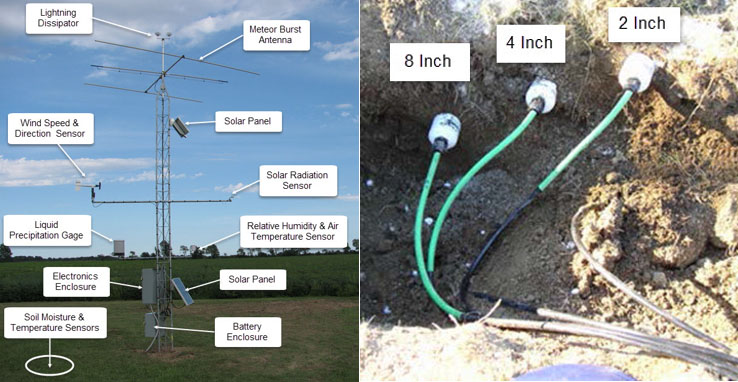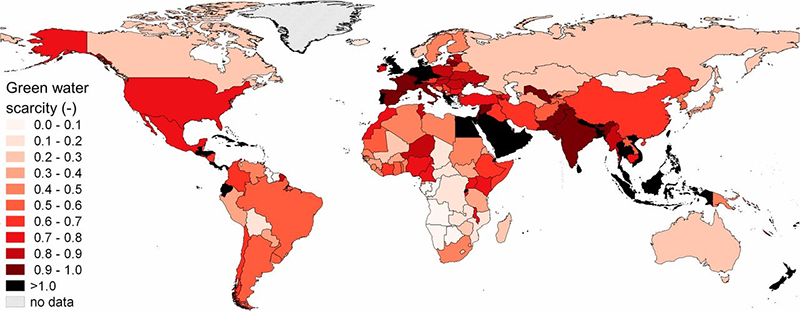All freshwater comes from precipitation over land, which is distributed on Earth as blue and green water. Blue water—that is, surface and groundwater—is stored as freshwater in lakes, streams, ice, and snow, as well as below ground. Green water is soil moisture. It is used by plants and returned to the atmosphere through evapotranspiration, whereby water is lost to the atmosphere by evaporation from the ground and by transpiration from vegetation. See also: Hydrology; Soil; Water resources

Although blue and green water are interrelated in terms of Earth’s hydrologic cycle, when we think of water scarcity (lack of supply), we tend to think of blue water. Perhaps this is because blue water is visible. For example, we can see water flowing in a stream or from a faucet, and we can carry it in a bottle. Green water is, in essence, invisible. Yet humans use more green water than blue water. Indirectly, the consumption of green water is seen as biomass. Human use of green water comes mostly from agriculture in the growth of plants and the use of plants or biomass to raise poultry and livestock. See also: Agricultural soil and crop practices; Biomass

Green water availability is not guaranteed. Availability can be scarce, too, for a variety of reasons, such as climate change, drought, and inefficient agriculture. In addition to human use, green water supports biodiverse ecosystems. According to researchers reporting in the journal PNAS (March 2019), human activities consume 56 percent of the world’s sustainably available green water. In certain places, however, this percentage is much higher. According to the researchers, increased consumption of livestock food products and use of biofuels are responsible for the increase in green water use. See also: Agriculture; Drought; Ecohydrology; Ecology; Ecosystem; Global climate change
Sustainable green water use is not a simple matter due to the existing pressures of providing food and energy for growing populations. However, in regions where green water is already scarce, there is very limited potential for increasing plant growth from green water. Blue water could be used for irrigation, but it is also scare in many of the same regions. Researchers have concluded that slowing the growth of green water consumption will require formulating policy measures, improving soils to hold more carbon and water, as well as producing more crops while using less water to do so. The alternative is greater loss of ecosystems, particularly grasslands and forests. See also: Forest ecosystem; Grassland ecosystem; Soil ecology; Water conservation





